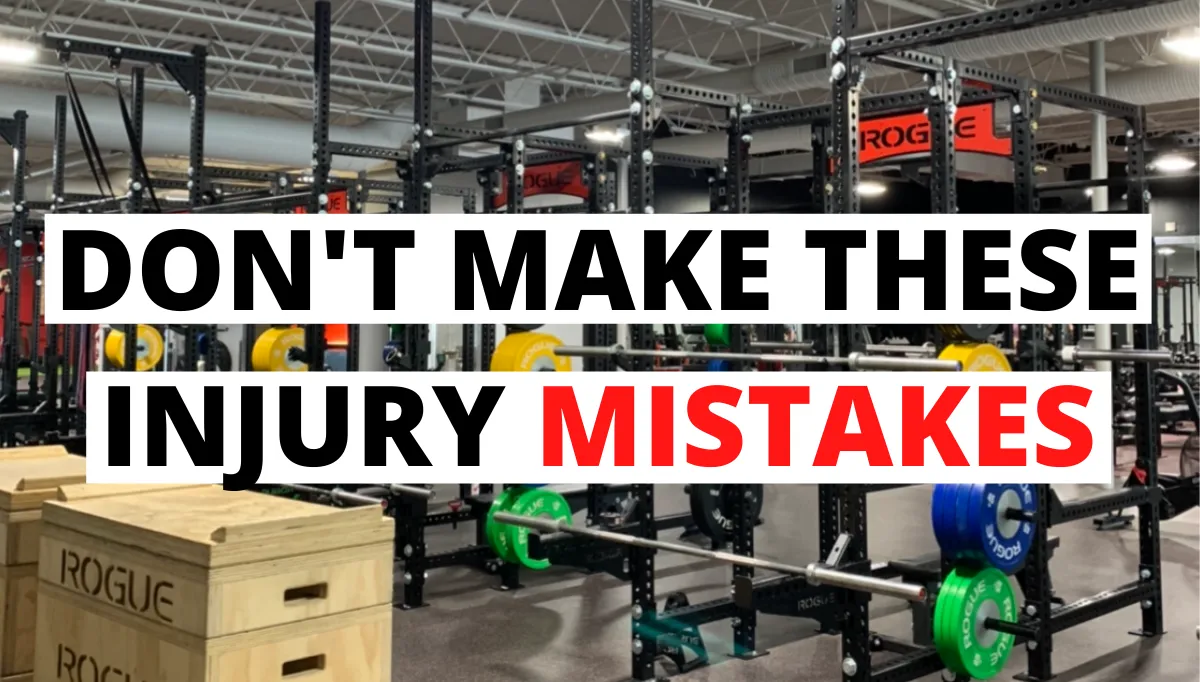When you suffer an injury in the gym, knowing what to do and what not to do can set you up for success and help you recover faster and get back to lifting and training the way you want. People are always talking about what TO DO when you get injured, but not nearly as many people discuss what you SHOULDN’T do when you experience an injury in the gym. So today we are going to do just that!
Below, we are going to cover the 3 main things that you should NOT do when you get injured in the gym.
1. PANIC!
You’re on your last set of deadlifts for the day and all of a sudden you feel a huge “POP” in your back, followed quickly by a lightning-bolt sensation of pain in your back and leg. Most peoples’ initial reaction is to freak out and start thinking of all the things that you did wrong and how you’re going to be dealing with back pain for the rest of your life.
But, this is exactly what you SHOULDN’T do. Panicking at the first sign of pain/injury can set you up for failure in the long-term, because it will result in you making decisions and choices that aren’t beneficial for healing and getting back to squatting, deadlifting, pressing, and all of the other activities you want to do.
Do This Instead: Instead of panicking, try to collect yourself, focus on your breathing if the pain is bad, and remind yourself that this injury/pain will get better.
2. COMPLETELY REST
Completely stopping exercise is often one of the worst things that you can do when dealing with an injury, even if it makes logical sense to do. When we completely stop training for a period of time, we become de-trained and lose strength, muscle mass, endurance etc. We can also lose the ability of our bodies to handle high amounts of stress (and lifting/exercise is a type of physical stress).
When this happens, it can make getting back into the gym harder, and it sets you up to have flare ups of your pain/injury more easily.
Do This Instead: Modify your training around your injury, so that you can continue to train at the highest level possible, without continuing to aggravate your pain. If regular deadlifts cause a lot of back pain, try some tempo trap bar deadlifts. If back squats cause a lot of knee pain, try some slow eccentric split squats. If the bench press really hurts your shoulder, try some landmine presses instead.
3. DON’T OBSESS ON “THE WAY”
It’s completely natural to want to know exactly why an injury or pain happened, but unless you had a specific acute injury, it’s often impossible to know why these injuries happen. So many things (sleep quality/quantity, nutrition, previous injury experiences, other mental and emotional stressors etc) can contribute to injuries that knowing exactly why injuries happen is almost impossible.
Do This Instead: Focus on “the what.” The what is what you have to do to get back to the activities that you enjoy. Whether that’s modifying your training, addressing life stressors, or investing in a healthcare provider to help you, focusing on “the what” will help you overcome an injury or pain much better than focusing on “the why.”
If you’re looking for help with a current injury, click the button below to see if one of our expert Doctors of Physical Therapy can help!



